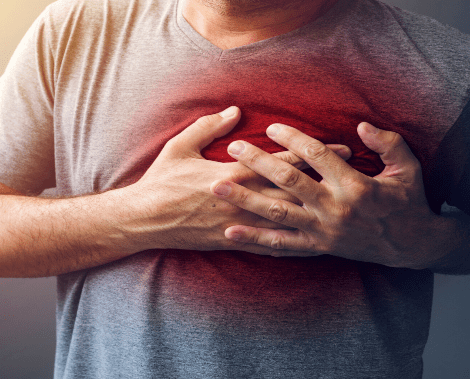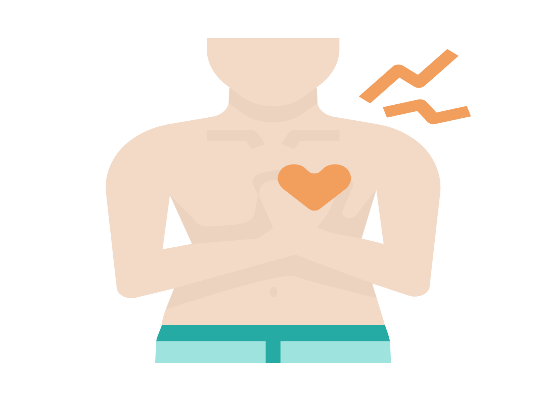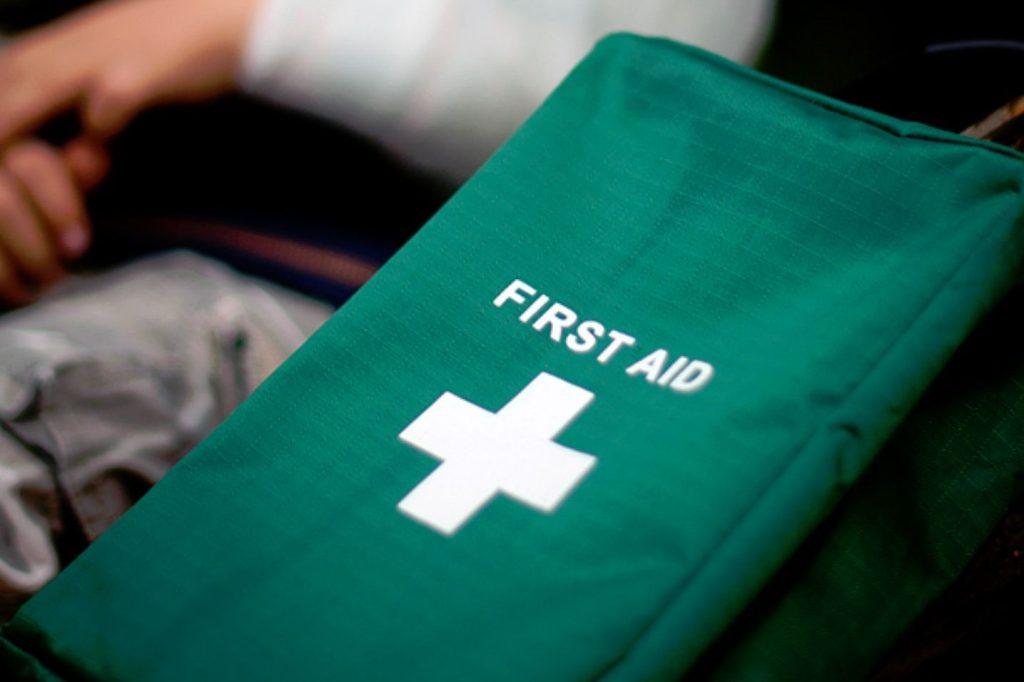
Do you know the signs of a Heart Attack?
According to BUPA UK, 175,000 heart attacks occur in the UK every year. So it’s no surprise that a heart attack (or Myocardial Infarction) is one of the leading causes of death.
On average, men suffer more heart attacks than women. And there can be gender differences in the symptoms too.But what are the signs of a heart attack? And what should you do when someone is having one?
That’s what we’re going to look at now. Let’s get started.
The Signs of a Heart Attack
What is the main sign of a heart attack?

It’s chest pain, right? Well, you’re technically not wrong. But you’re not 100% right either. There can be no chest pain, or a silent attack.
The important thing to mention about chest pain and heart attacks is that although the person affected is having problems in their chest area, it isn’t actually painful. What you need to listen out for instead is when someone says their chest “feels heavy”, or “like someone is sitting on my chest” which means it takes a lot of effort to take a breath.
Back Pain and Heart Attacks
When delivering First Aid courses to people who have helped someone who has had a heart attack, many people give a different answer: back pain.
This worries me. Mainly because the majority of people I teach are in the care industry who, because of the hard and tireless work they do, often suffer from back problems already. And more broadly, most of us have back problems in some way or another.
Why does this worry me? A heart attack is a medical emergency and every second counts. So imagine the damage done by delaying putting out a call because a heart attack is mistaken for back pain. This might seem shocking, but I probably hear about this delay once a month on First Aid courses – far too often for my liking.
So, please, if you spot any of the other symptoms then do not delay in calling 999.
Other Symptoms
The other typical signs around heart attack are:
– Shock based (Cardiogenic)
– Lack of oxygen (Cyanosis)
In these cases, you will see colour changes on a person’s face. They’ll go pale, will look cold and have bluish lips.
Differences Between Men and Women
Although men and women can show the same symptoms of heart attack, I have spoken to several nurses who explain their experiences with women.

Typically, women get a dull pain in their arm, which then shoots up across their shoulders, neck, and then their jawline. The pain isn’t that intense either. For this reason, it is more likely that a heart attack in women can go unnoticed than in a man.
If your work colleague or a family member is feeling unwell, goes pale, sweaty and experiences pain around their upper body – make a call to get advice.
Angina Attack
I can’t talk about heart attacks without mentioning Angina – which often isn’t a medical emergency. The tricky thing with angina attacks is that the symptoms can be identical to a heart attack, such as heaviness on the chest, pain in the arms, shoulders, neck and jaw.
How Can You Tell The Difference?
There are two differences that may help you decide:
- Angina attacks calm down naturally (after about ten minutes), but a heart attack won’t.
- Heart attacks start suddenly without warning, but an angina attack will not.
Angina attacks can be caused by things like:
- Anything that increases a person’s breathing rate such as
- Exercise
- Long walks
- Carrying heavy objects etc
Common sense usually prevails in these situations. What you’ll find is that your natural instincts will kick in. You’ll intuitively either know if someone is having a serious heart attack, or you’ll ask questions to help you find out.
Ask the patient “what happened?” or “do you take any medication?”
By asking these questions you will find out if it came on after exercise (meaning it could be Angina) and if they have medication, such as a spray or tablet. If they do, it’s likely they have been diagnosed with Angina already.
Angina Medication
Angina medication is fast-acting – sometimes doing its job in 1-2 minutes. GTN will have virtually no impact if they are having a heart attack. On all of my First Aid courses, I will always state-call 999 if by the second spray from their GTN medication it doesn’t seem to have any impact.
Just remember what I said as a word of caution though – a heart attack can look the same.
For that reason, let common sense prevail and call 999 or 111 for help and advice.
Likewise, if their medication doesn’t seem to be helping then don’t hesitate to make the call.
What About Aspirin?
In general, aspirin is worth giving to the casualty if a heart attack is suspected, but things are not always that simple.

Aspirin thins the blood (and as a result thins the blood clot that is causing the attack) providing relief. Dispersible Aspirin is best as it gets into the bloodstream faster.
It’s important to note the aspirin won’t stop a heart attack.
Before administering aspirin, get permission from the ambulance controller (the calls are recorded) and get permission from the casualty also. Check with them that it is okay for them to take aspirin and that it won’t have any side effects – something that should have been discussed on the emergency call already.
To make it clear: you cannot give someone aspirin without getting their consent first.
Typically, this is how qualified professionals will advise:
- Give the aspirin to the casualty and allow them to take it themselves (as a first aider you shouldn’t dispense medication).
- Encourage them to place the tablet under their tongue and NOT to chew it. 300 mg is great or thereabouts. Let their saliva break down the tablet naturally.
To Summarise
Every second counts when someone has had a heart attack, so if you’re in any doubt, call 999 immediately. Better safe than sorry.
If you were surprised by anything you’ve read here, see how many of these first aid myths you thought were facts are actually wrong.
[/et_pb_text][/et_pb_column][/et_pb_row][/et_pb_section]











